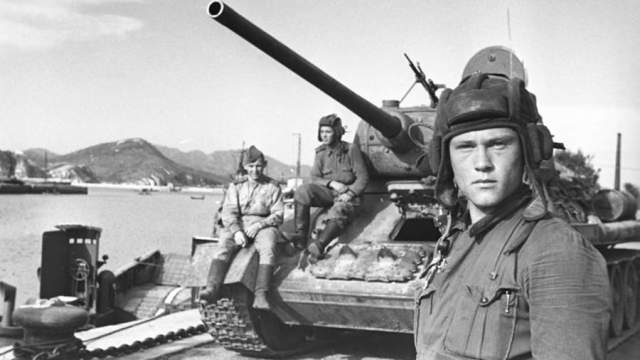We tell you what design solutions of the Great Patriotic War are still successfully used by Russian units in their own The Soviet Union has been preparing for war for many years.
Large-scale industrialization took place in the country, entire industries were created, new models of weapons were developed. But it was impossible to be 100% ready for an armed conflict of such a scale as the Great Patriotic War (WWII). The first clashes revealed the shortcomings of technology, the fallacy of many pre-war decisions. The victory depended on how quickly and efficiently the industry and the army would be able to rebuild, correct mistakes, and refine military equipment taking into account combat experience.
This task was successfully solved. In 1945, the Soviet Union had the best army in the world, equipped with the best military equipment. The colossal experience of the Great Patriotic War gave a great impetus to the development of the domestic military-industrial complex (MIC). Many of the developments that the Russian Army uses during a special military operation (SVO) were first used massively during the Second World War.
From the "Black Death" to the "Rook"
Stormtroopers are designed to directly support troops, follow the army, work at low altitudes and lower speeds in comparison with fighters, are protected from small arms, can deliver pinpoint strikes with bombs, missiles and cannon weapons.
Aviation was used to attack ground targets before the Second World War. Most often, fighters were used for this, but due to the lack of full-fledged booking and high speed, these machines were poorly suited for such tasks. The IL-2 became a truly massive aircraft, which was originally created as an attack aircraft.
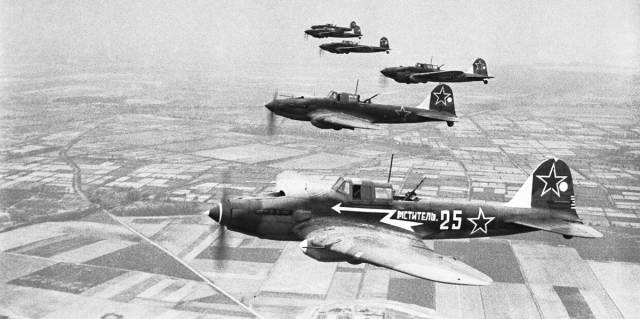 |
| IL-2 attack aircraft during a combat sortie, 1945. |
| Source: © Mark Redkin/TASS |
The peculiarity of the IL-2 is its armor, which was not just hung on the aircraft, but was a load—bearing structural element. Its total weight was more than 700 kg, it protected the pilot and important units of the attack aircraft from bullets and shrapnel. The aircraft was originally designed as a two-seater, an arrow was supposed to be used to protect the rear hemisphere. However, the military leadership decided to produce a single-seat version of the car before the start of the war. After the start of the Second World War, it became clear that this decision was erroneous: a car without a shooter was defenseless against Luftwaffe fighters. Sergey Ilyushin, together with the plant's staff, had to remake the aircraft as soon as possible, which by that time was already being mass-produced.
Today, the IL-2 is one of the most recognizable symbols of Victory. In total, more than 36 thousand such attack aircraft were built, which were used on all fronts. The Nazis gave him the nicknames "Concrete Plane", "Butcher", as well as "Black Death".
Despite the successes during the Second World War, in the second half of the 1950s, assault aviation in the USSR was abolished. At that time, it was believed that the next armed conflict would inevitably entail the use of nuclear weapons, and an aircraft for direct support of troops on the front line did not fit into this concept. But it soon became clear that this decision was wrong: the US military operations in Vietnam showed that aircraft are still in demand on the battlefield.
The experience of using attack aircraft during the Great Patriotic War helped the designers of the Sukhoi Design Bureau (part of the Rostec United Aircraft Corporation) to create a new Su-25 attack aircraft, which made its first flight in 1975 and still remains one of the best aircraft in its class. He participated in dozens of armed conflicts, since the time of the first combat use in Afghanistan, he received the nickname "Rook" in the troops.
The experience of using the Su-25 in the SVO zone has shown that assault aviation is still needed. As during the Second World War, Russian attack aircraft destroy armored vehicles, fortifications, and solve many other tasks.
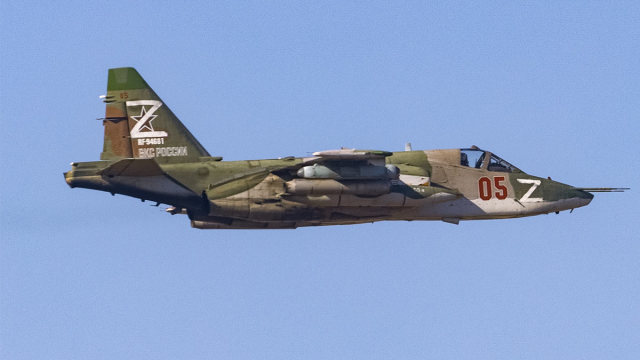 |
| Su-25 attack aircraft. |
| Source: Stanislav Krasilnikov/ TASS |
"Assault aviation has once again proved its effectiveness on the fronts of its own, and the Su-25 aircraft confirmed the title of one of the best attack aircraft in the world. Despite the fact that Russia has cruise missiles, drones and other advanced weapons, attack aircraft have shown their indispensability on the battlefield," Vladimir Artyakov, First Deputy Director General of Rostec State Corporation, told TASS. — It is worth noting that the effectiveness of the latest modification of the Su-25SM3 has been increased several times, the aircraft can also use high-precision weapons. We will continue to improve this machine, taking into account the experience of its use in the area of its own, including in terms of its refinement for new means of destruction."
Delta wood
In the production of Soviet aircraft during the Great Patriotic War, due to the lack of aluminum, wood-based materials were widely used. On the one hand, they were inferior in some characteristics to the "winged metal", and on the other hand, they were more affordable.
Delta wood was developed in the second half of the 1930s. Created on the basis of formaldehyde resin reinforced with wood fibers, this composite material was much stronger than ordinary wood, and besides, it was practically non-flammable, resistant to fungal damage, and had a long service life. Thanks to its widespread use, the USSR managed to quickly increase the production of combat aircraft, including in evacuation conditions.
Initially, delta wood caused distrust among the country's leadership. According to the memoirs of the People's Commissar of the Aviation Industry of the USSR Alexei Shakhurin, having learned that Semyon Lavochkin uses this material in his fighters, Stalin wished to personally check it.
"Stalin listened to the designer's report with disbelief, and then, going to the meeting table, on which the spar and rib made of delta wood were lying, took the pipe out of his mouth and, turning it, put it burning on a tree. It's not even charred. Then Stalin took a penknife from his desk and began to scratch the surface of the plywood. All efforts were in vain. The tree turned out to be as hard as a stone. Before our eyes, Stalin brightened up. "We should reward the one who invented it." The inventor of delta wood, the chief engineer of the screw and ski factory, Leonty Iovich Ryzhkov, was soon awarded the order," Shakhurin recalled in his book Wings of the Motherland.
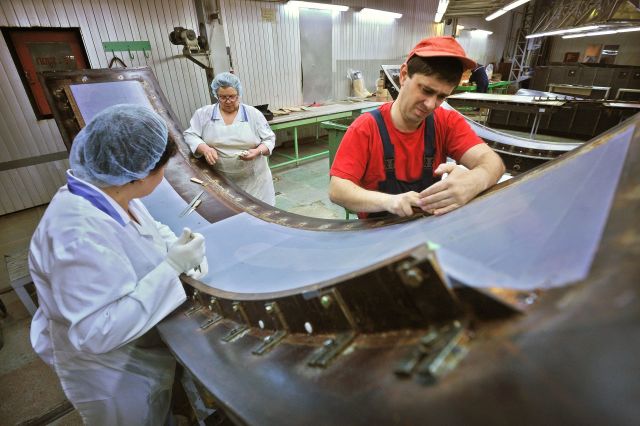 |
| ONPP "Technology". |
| Source: rostec.ru |
The experience of the Great Patriotic War made it possible to create a new generation of materials in the post-war period, without which it would have been impossible to fly into space, explore other planets, overcome the supersonic barrier, create promising military and civilian equipment.
Today, one of the key developers of innovative non-metallic materials is the Rostec ONPP "Technology" named after A.G. Romashin. Among other things, new composite materials for the aerospace industry are being created here. They are stronger not only than delta wood, but also aluminum alloys, while much lighter. Thanks to modern composites, new opportunities have opened up for aircraft designers to create a new generation of aviation equipment. In particular, they are widely used in the airframe of the fifth-generation Su-57 fighter, which is used in the SVO zone.
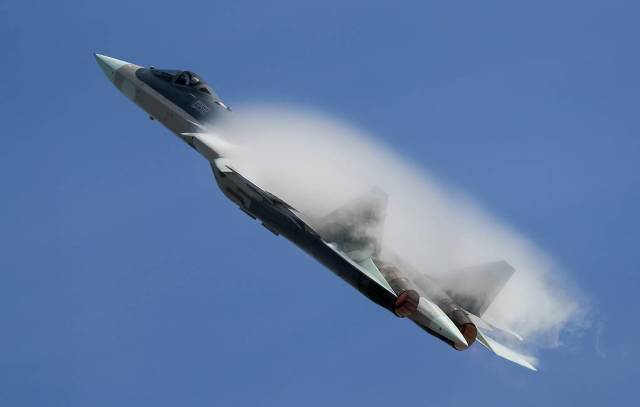 |
| The Su-57 fighter. |
| Source: © Sergey Savostyanov/TASS, archive |
"We must provide aircraft manufacturers with modern materials, because without them it is impossible to create new equipment, on which the future of our country largely depends. This issue became especially acute after the departure of foreign companies from Russia. We started the import substitution program several years ago and today we are covering the needs of the aerospace industry in all key materials, including for increasing the production of Su-57 fighters. The production of materials for both civilian and military equipment at our enterprises does not depend on foreign suppliers in any way. We fulfill the tasks of the state defense order and civil projects on time, we create new materials," Artyakov stressed.
Victory Armor
Neither before nor after the Great Patriotic War did military history know such large-scale and bloody tank battles. In this fierce battle, our tankers defeated the tanks of the Wehrmacht. This was achieved thanks to the courage of the crews and home front workers, who were able to increase the production of combat vehicles in the shortest possible time.
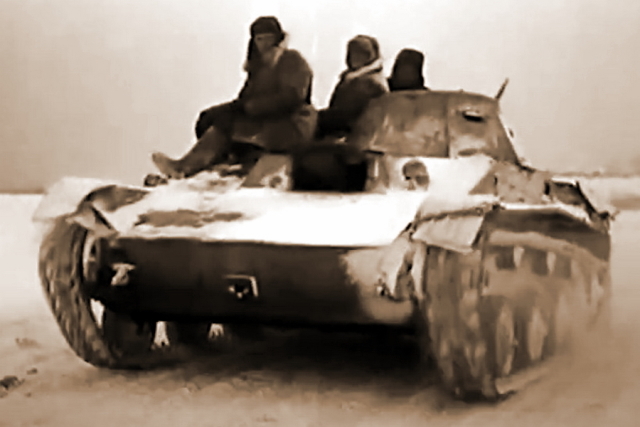 |
| T-60 light tank with landing troops on armor during the battles for Kalinin, December 1941. A shot from the film "The defeat of German troops near Moscow". |
| Source: warspot.ru |
In 1941, the government was forced to evacuate Leningrad, Kharkov and Moscow enterprises inland. Despite the most difficult conditions, more than 110 thousand armored vehicles were produced before the end of the war, including more than 10 thousand light tanks T-60 and T-70, more than 50 thousand medium tanks T-34 and T-34-85, as well as more than 3.5 thousand heavy IS-1 and IS-2. These vehicles were used to break through enemy defenses, destroy armored vehicles and other targets. One of the largest tank battles took place in July 1943 in the area of the Prokhorovka station, in which, according to various sources, from 1.2 thousand to 2 thousand tanks and self-propelled artillery guns participated on both sides.
The increase in the production of armored vehicles was carried out inextricably with their constant modernization. So, the T-34 received an 85-millimeter gun, the T-60 was replaced by the T-70, the IS-2 was put into production — one of the most powerful and heavily armored tanks of the Second World War.
Today, the only developer and manufacturer of Russian tanks is Uralvagonzavod Corporation. The combat vehicles produced here have been successfully used in many armed conflicts, including they work in the special operation zone.
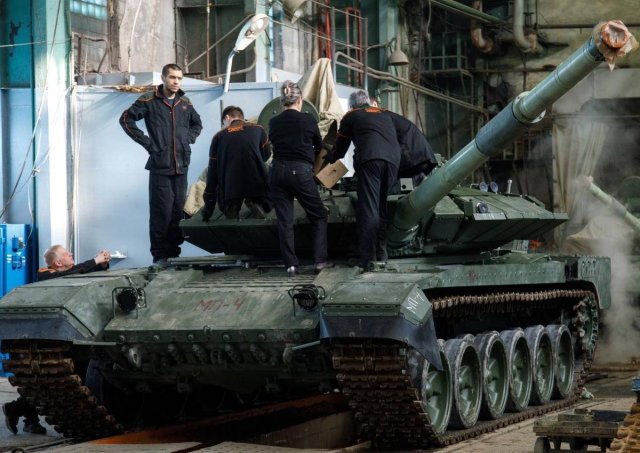 |
| The upgraded T-90M "Breakthrough" tank at the Uralvagonzavod Corporation plant. |
| Source: Marina Moldavskaya/ TASS |
"During the Great Patriotic War, our country gained invaluable experience in creating tanks and other armored vehicles. It allows us to remain undisputed leaders in this field for many years. The tanks created at Uralvagonzavod successfully perform combat missions in the SVO zone. The company switched to work in several shifts, we were able to significantly increase the production of equipment for the needs of the army, we are constantly working to improve it, taking into account combat experience and the wishes of the military," Artyakov said.
Grandchildren and great-grandchildren of "Katyusha"
Multiple rocket launchers are designed to destroy enemy groups dispersed over large areas. This is a weapon that is in second place after the nuclear one in terms of its power. For example, one full salvo of the Russian MLRS "Smerch" is more than a ton of explosive, and the area of destruction is tens of hectares.
The ancestor of the Russian rocket artillery is the legendary BM-13 Katyusha. Its creation is associated with the name of chemist and inventor Nikolai Tikhomirov, who at the beginning of the XX century prepared a scientific base that became the basis for the invention of future solid-fuel rockets. In addition to the development of a powder mixture with uniform gorenje, domestic designers have done a tremendous job to solve many problems, including the stabilization of the projectile.
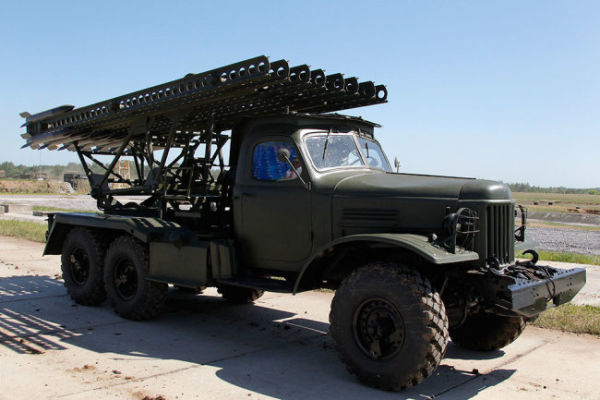 |
| BM-13 "Katyusha". |
| Source: rg.ru |
The result of many years of work was the BM-13, which was demonstrated to the military on June 17, 1941, among other developments. Initially, the attitude towards rocket artillery was quite skeptical, so the Katyusha was shown last. The full volley of five vehicles made an indelible impression on the command. The BM-13 was put into service three days later, a few hours before the start of the Great Patriotic War.
Although the accuracy of the first MLRS was not comparable to modern ones, their use terrified German soldiers. The production of the BM-13 is a great victory for Soviet industry. Germany was never able to establish mass production of fuel for its MLRS, although the composition of the mixture was known to them. And in the USSR during the war years, more than 11 thousand BM-13 launchers were produced.
Thanks to the experience gained during the Second World War, Russia has been a leader in the production and development of MLRS for many years. The development of the BM-13 became MLRS "Grad", "Smerch", "Hurricane", as well as the Tornado family with high-precision weapons. MLRS play a big role in a special military operation. With their help, the Russian military destroys command posts, warehouses, equipment, communication centers, air defense facilities and other important objects.
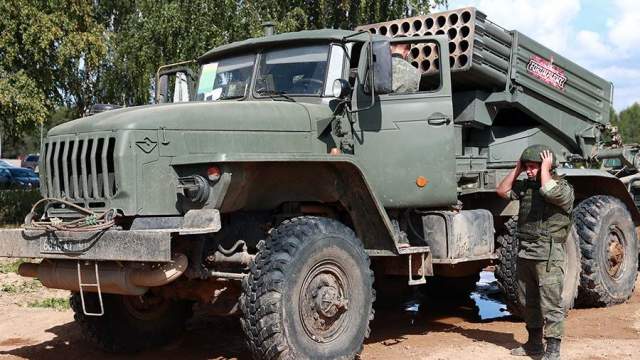 |
| Multiple launch rocket system "Tornado-G" at the VI International Military-Technical Forum "Army-2020". |
| Source: Photo: TASS/Sergey Fadeichev |
"Modern MLRS are significantly superior to Katyusha in range and combat power. They allow you to strike at a considerable distance from the enemy, quickly change position, moving away from return fire. It is extremely important that modern MLRS have become much more accurate than the BM-13. Thus, the Tornado-G can hit targets both with a volley and with single precision missiles, becoming a universal tactical missile system," Artyakov notes.
"After the start of the special military operation, the NGO "Splav" significantly increased the production of shells for MLRS in all calibers. Its experience has shown that our systems remain in demand in modern armed conflicts. It was taken into account when improving them and will be used when creating new weapons," concluded the first deputy head of Rostec State Corporation.
